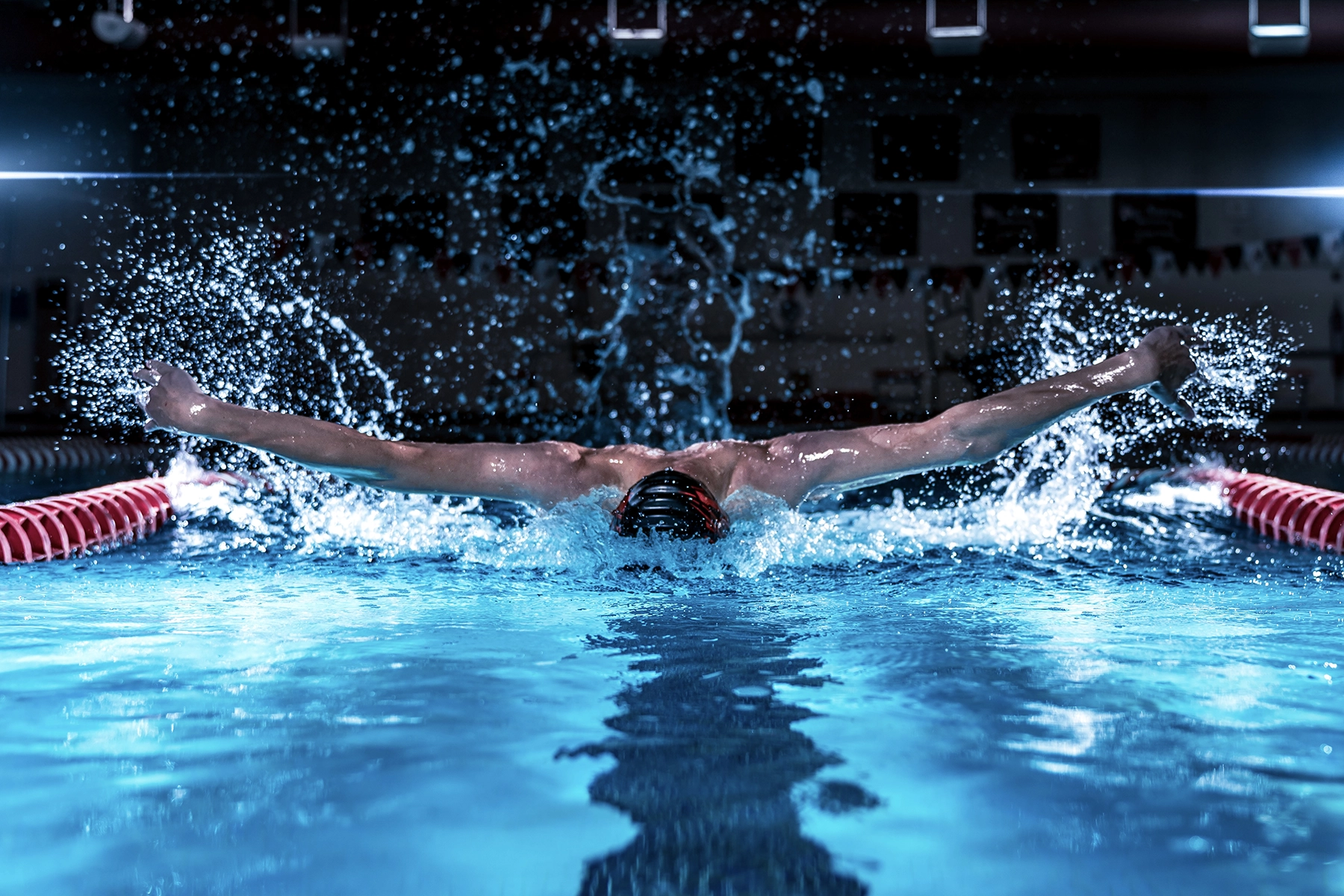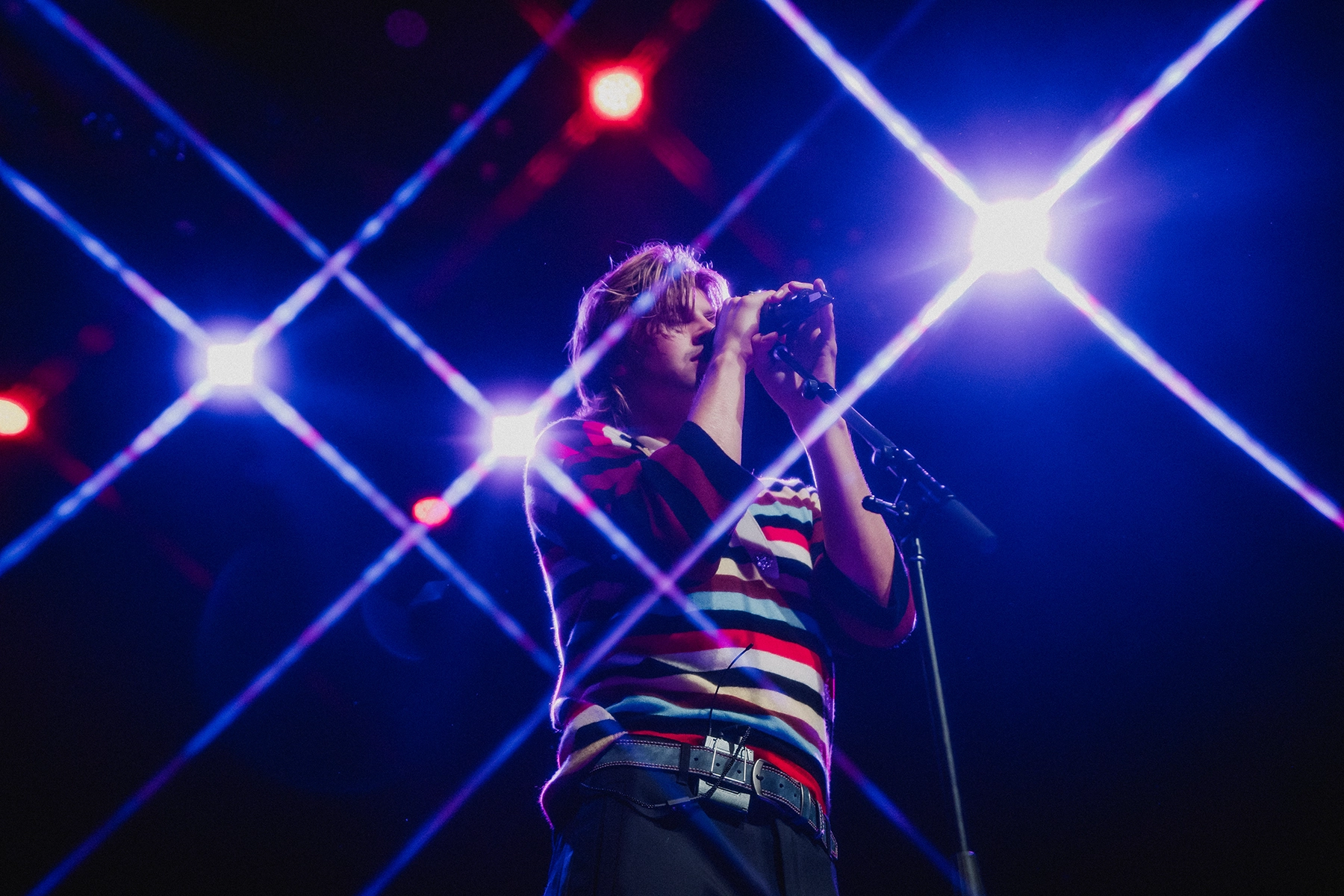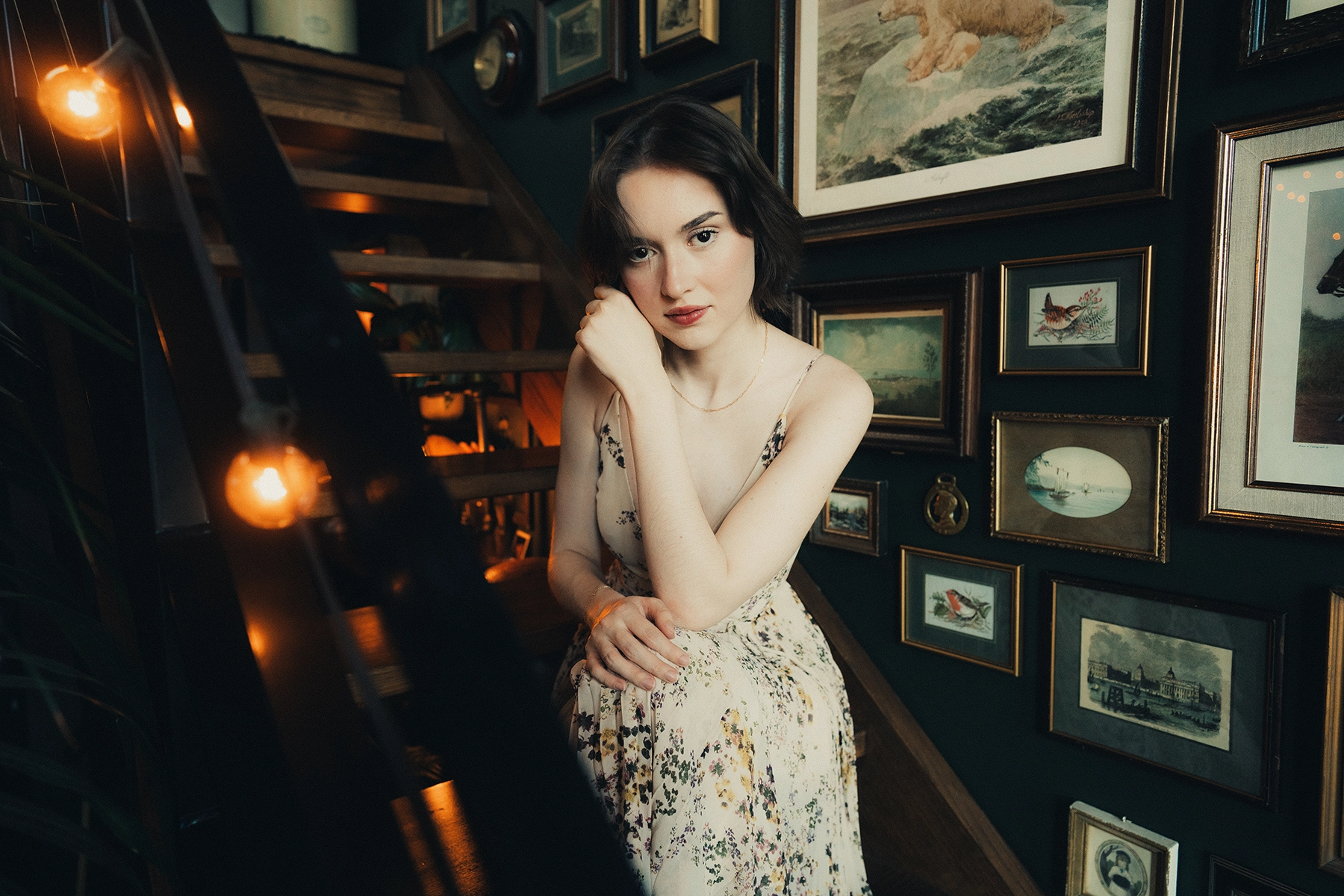
Negative Space, Positive Impact
Dylan Dufault’s Tamron 17-28mm F2.8 and 28-75mm F2.8 lenses bring his cinematic portrait visions to life.
Author: Jenn Gidman
Images: Dylan Dufault
Share Article
Dylan Dufault’s Tamron 17-28mm F2.8 and 28-75mm F2.8 lenses bring his cinematic portrait visions to life.
Dylan Dufault’s film-inspired approach to photography permeates his work whether he’s on a travel adventure along Europe’s Camino de Santiago or capturing an intimate portrait. For the latter, the Canadian photographer says he’s been influenced by such innovative moviemakers as Hayao Miyazaki and Wong Kar-Wai, spurring him to create an often dreamy atmosphere that stands out in today’s crowded visual landscape.
“I like my portraits to have room to breathe, so I prefer a lot of negative space,” Dylan says. “Negative space draws the eye and creates a mood that feels intentional.”
Dylan has tapped into what he considers to be the best lenses for his portrait photography: The Tamron 17-28mm F2.8 Di III RXD ultra-wide-angle zoom lens and the 28-75mm F2.8 Di III VXD G2 standard zoom for his Sony mirrorless camera system, which allow him to balance subject and environment to produce his ethereal images. With their lightweight and compact design, fast autofocus, and exceptional image quality, these two lenses offer Dylan the versatility he needs, whether he’s in a darkened restaurant or on the streets of Vancouver.
“When I first started shooting portraits, I was obsessed with the wide-angle perspective, so the 17-28mm F2.8 became my go-to lens soon after I started using it in 2020,” Dylan says. “It felt like I was seeing stills from a movie. That lens also is handy when I’m shooting in cramped quarters, especially indoors, and want the ability to capture more of the scene.”
Dylan has since added the versatile 28-75mm F.2.8 into the mix, appreciating its ability to seamlessly transition from wide shots to close-ups, especially when traveling or shooting on location. “It saves the day when I need to quickly adapt,” he says. “I can go from capturing the environment to a tight headshot without swapping lenses. I also love the beautiful bokeh I’m able to achieve with the F2.8 aperture on both of these lenses, which helps isolate my subjects when needed.”
Read on for some of Dylan’s tried-and-true portrait photography tips.
DYLAN’S QUICK TIPS
Diffuse, diffuse, diffuse.
I prefer cloudy days, which provide a soft, even light that flatters skin tones and avoids the harsh shadows often created by direct sunlight. I also enjoy shooting in golden hour. I’ll usually look for shaded spots or position my subject where buildings or trees help soften the light, and I’ll often use reflectors and diffusers to control overly bright highlights.
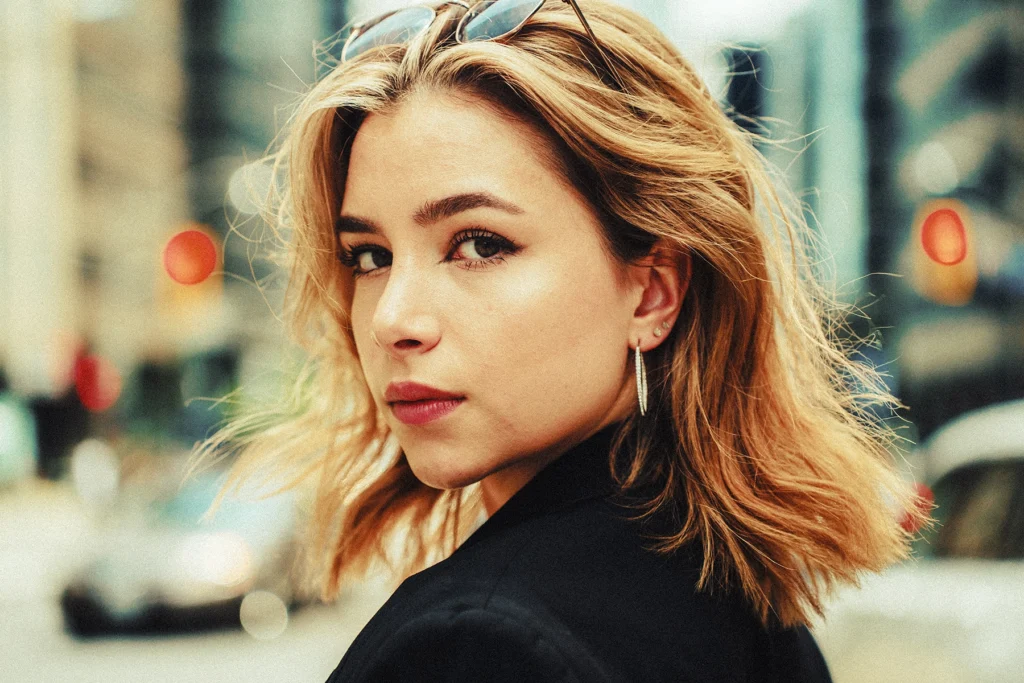
Bringing it inside.
When I’m indoors, I lean heavily on natural light. Large windows often serve as my main light source, creating soft, directional lighting. You can see in the photo of the woman on the stairs, which is one of my favorite images, how that natural light on her face creates a luminous, almost glowing effect on her skin and makes her face pop. (By the way, I used the Tamron 17-28mm F2.8 for that shot and for the woman on the couch, because those were both pretty tight spaces; the wide angle of that lens allowed me to photograph my subject and still capture a bit of the environment.)

For darker settings where natural light isn’t an option, I’ll occasionally bring in artificial lighting, but I’ll use a light touch. In the photo here of Jacob Tremblay, a young actor who first made a splash on the big screen in 2015’s Room, we were shooting in a dimly lit restaurant, and the client wanted to use a bit of flash. So I used a single flash with an umbrella to mimic the softness of window light. The lighting behind Jacob is all available lighting; the lighting on his face is from the flash.
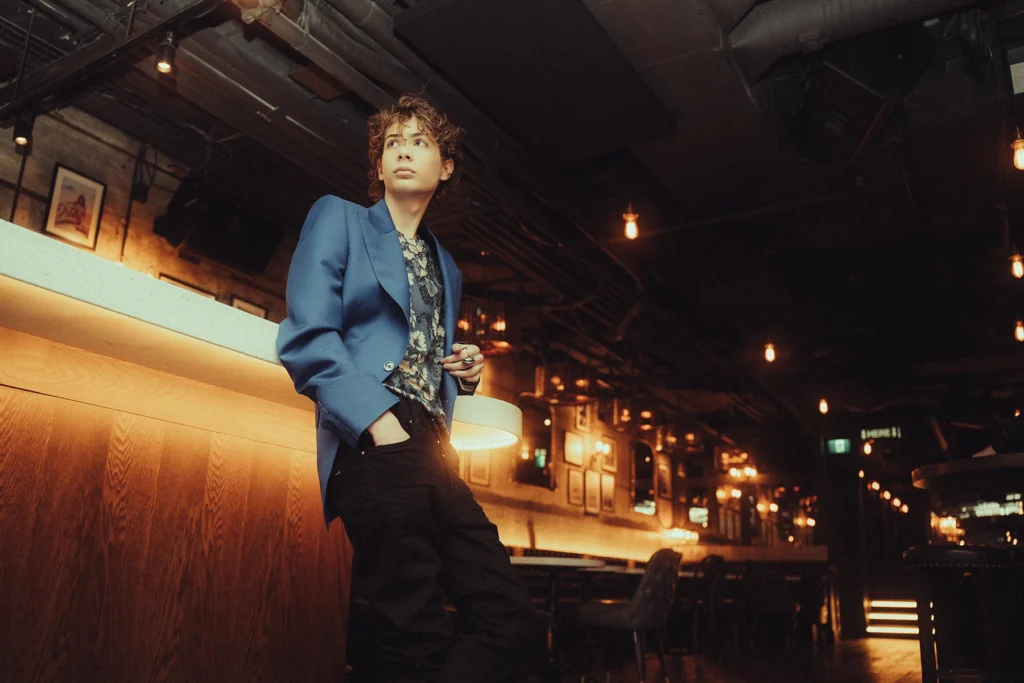
Find the right perspective.
Angles play a key role in creating expressive portraits. For dramatic “hero” shots, such as those here featuring Jacob or Krista, the young woman in front of those buildings, I’m not afraid to get low—sometimes even lying on the ground—so I can shoot up at them. This type of angle not only adds a sense of power and confidence to the subject, but also makes good use of negative space and leading lines to guide the viewer’s eye.
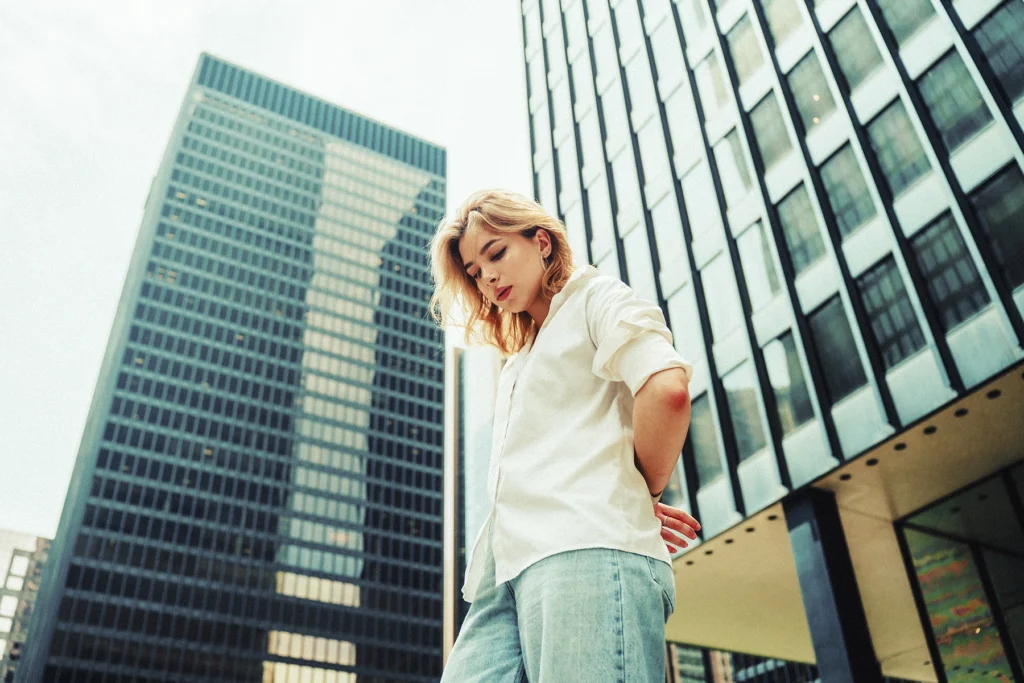
When I’m looking for a more intimate or environmental portrait, I’ll switch gears and get closer to my subject, shooting straight on or at eye level, allowing me to capture tighter, more personal portraits while still keeping some environmental context in the frame. I’ll often use the rule of thirds to structure my compositions, ensuring that both the subject and the surrounding elements feel balanced.
Prompt inspired poses.
When it comes to posing, I prefer a collaborative, natural approach rather than rigid direction. I’ll build a mood board before a shoot, pulling inspiration from paintings, films, and what have you. to set the tone. Sometimes I don’t even have to go to the mood board. For the photo here of Jacob, I didn’t have one—he was very chill and open and just seemed to intuitively know how to pose for me. I’ll also pay attention to subtle actions that make portraits seem more dynamic, like the girl holding the phone to her ear.
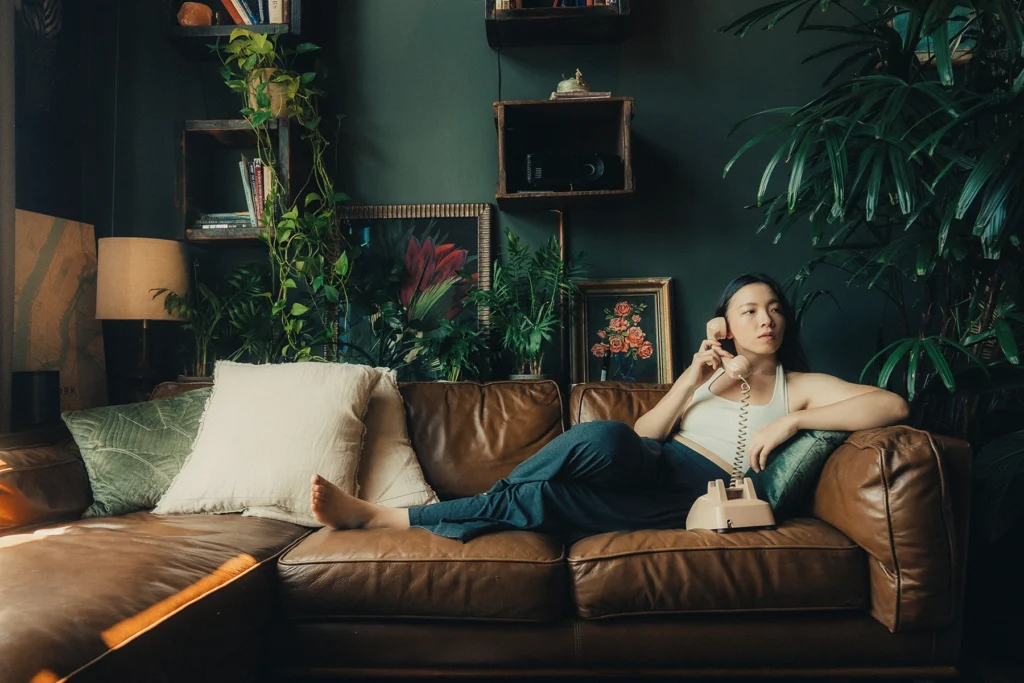
Boost your storytelling with color grading.
Color grading is one of my signature tools for shaping mood in my portraits. I look to filmmakers like Steven Soderbergh, Christopher Nolan, and Danny Boyle to help me come up with a more experimental, grainy look that doesn’t look overly sterile. I’ll often use LUTs—lookup tables, a type of preset that allows you to shift the color, tone, and contrast of an image with a simple click—in my work to help create depth and texture. For example, I tried to make that first photo of the woman on the phone very cinematic and dreamy, almost like a painting. The color grading I put to work here works well with the green plants in the image.
To see more of Dylan Dufault’s work, check out his website and Instagram.
